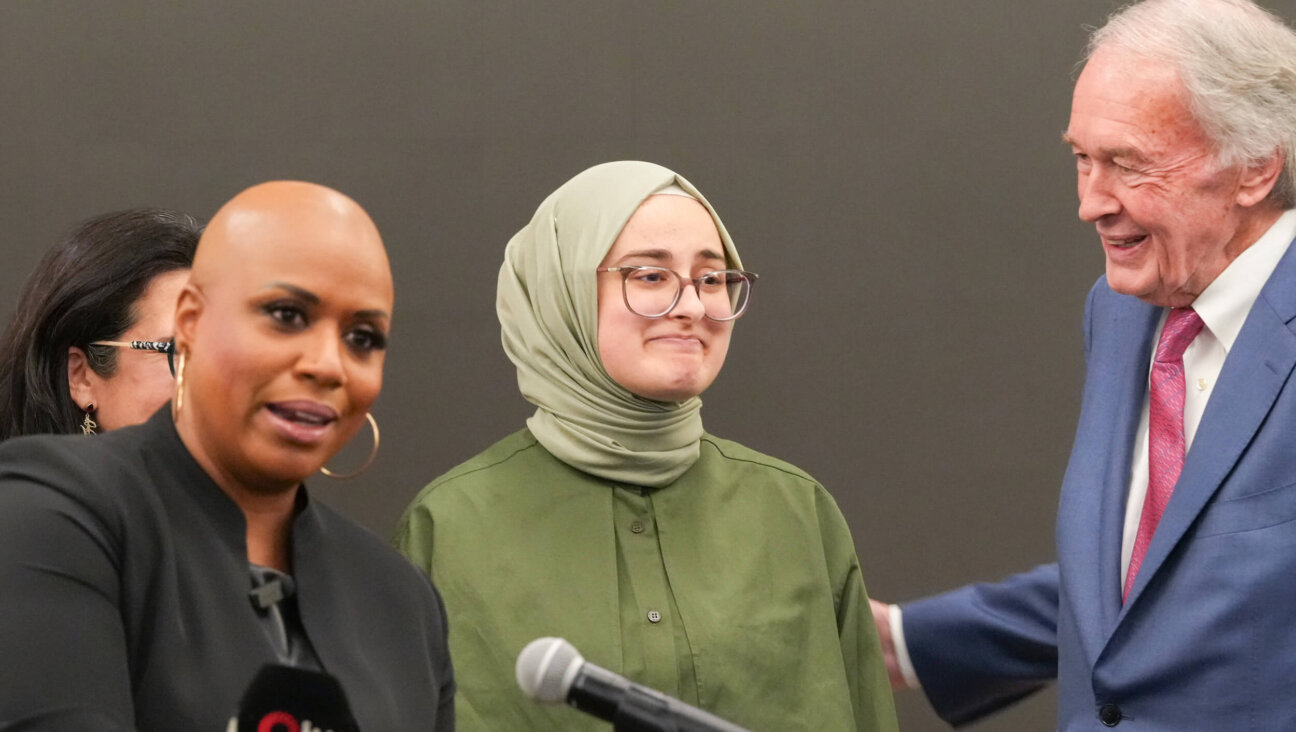‘Without emptiness, where would we find room to grow? Without hollowness, how could we breathe?’

Image by iStock

Image by iStock
It seems like every year, as the annual cycle of Torah reading reaches Leviticus; the third of the five books, congregational rabbis tense up. By now, we’ve finished investigating the human psyche courtesy of the rich characters that inhabit Genesis and we’ve emerged with bated breath from the adventures of the Exodus. Suddenly, our focus shifts to a book that has a central theme of — ugh — sacrifice.
Although sacrifices for ancient Jews were analogous to the prayers of today, the concept irks our contemporary sensibilities. While people brought a diversity of offerings to the Temple, including grains and first fruits, one need not be an animal-rights activist to conjure up off-putting images when hearing the term sacrifice. Since medieval times, biblical commentators have provided plausible rationale. Maimonides suggested that animal sacrifices were necessary to wean people from human sacrifice, which was rampant among neighboring tribes. This logic seems to be validated by the story of the Binding of Isaac, when Abraham’s conscience was salvaged by a command to substitute a ram for his dear child. In contrast, other scriptural glosses have emphasized a pragmatic dimension — the insistence that only kosher animals be burned on the altar created an attractive compensation package for the Temple staff, who received the leftovers as an employee perk.
A refreshing approach, however, is offered by Professor Robert Alter in his recent translation of The Hebrew Bible (Norton Press, New York). Alter advocates zooming out in order to behold an overarching concept that represents an alternative narrative arc to Leviticus. That concept is “havdalah.” For most of us, that term is synonymous with the mystical ceremony closing Shabbat, which includes a candle, wine and fragrant spices. At its core, though, havdalah is a term that connotes a division, if not an outright separation. As stars appear in the Saturday night sky, we are liturgically distinguishing the Sabbath from the ensuing work week. Alter, who emphasizes the importance of “literary coherence,” enumerates multiple distinctions that punctuate Leviticus. For instance, the geographic distinction between the Tabernacle and grounds that are not hallowed, the dietary laws that separate kosher and prohibited creatures, the isolation of those who suffer from “Tsara’at” (a cryptic dermatological disorder treated by the Cohen) and so on.
Fortunately, our world is also equipped with a counterweight to the forces of separation, a force that brings things closer together. This can be seen in the Hebrew word for sacrifice, korban, which is derived from the root letters Koof-Raish-Bet, which imply proximity. In this context, the korban can bring me closer to God, closer to others and maybe even close enough to confront myself. If so, korban may have attained prominence because it seductively promises bonds that enable connection. In this reading, the korban is not so much about intricate ritual but instead a mechanism to restore balance.
Nowadays, as the world adjusts to the Covid pandemic, the tension between havdalah and korban cannot be dodged. The notion of “together apart” blares from neon billboards in Times Square.But is our species wired to cope with the paradox?
We did some homework and were fascinated to learn that the word “closeness” in English is derived from the Latin “clausus,” meaning “closed” or “confined.” For many of us, the conventional wisdom dictates that becoming more thoroughly acquainted with a subject requires closeness — a close-up view. Now, during shutdown, we find ourselves craving the deep gaze into the eyes of our beloved, the holding of the hand. Yet suddenly Covid-19 is teaching us that this may be a limiting way of exploring that which we are seeking to know more deeply. What if distance can, in fact, provide a wider perspective and a more encompassing understanding? A bird’s eye view.
Perhaps we are being offered a unique opportunity to expand the way we comprehend the notion of closeness. Without emptiness, where would we find room to grow? Without hollowness, how could we breathe? The poet Khalil Gibran, in his book The Prophet writes “let there be spaces in your togetherness, and let the winds of the heavens dance between you […] as the strings of a lute are alone though they quiver with the same music”. Empty space permits Love’s yearning.
Leviticus need not make us livid. The two overriding themes of Vayikra, separation and closeness, are precious, and can be leveraged to help us navigate the great paradox that has landed.
Abigail (a musician in Portland, Maine) and her father Ben (an oncologist in Jerusalem) have been studying the weekly Torah portion together since 2019 BC (Before Corona).
The Forward is free to read, but it isn’t free to produce

I hope you appreciated this article. Before you go, I’d like to ask you to please support the Forward.
Now more than ever, American Jews need independent news they can trust, with reporting driven by truth, not ideology. We serve you, not any ideological agenda.
At a time when other newsrooms are closing or cutting back, the Forward has removed its paywall and invested additional resources to report on the ground from Israel and around the U.S. on the impact of the war, rising antisemitism and polarized discourse.
This is a great time to support independent Jewish journalism you rely on. Make a gift today!
— Rachel Fishman Feddersen, Publisher and CEO
Support our mission to tell the Jewish story fully and fairly.
Most Popular
- 1

Fast Forward Ye debuts ‘Heil Hitler’ music video that includes a sample of a Hitler speech
- 2

Opinion It looks like Israel totally underestimated Trump
- 3

Culture Is Pope Leo Jewish? Ask his distant cousins — like me
- 4

Fast Forward Student suspended for ‘F— the Jews’ video defends himself on antisemitic podcast
In Case You Missed It
-

News In Edan Alexander’s hometown in New Jersey, months of fear and anguish give way to joy and relief
-

Fast Forward What’s next for suspended student who posted ‘F— the Jews’ video? An alt-right media tour
-

Opinion Despite Netanyahu, Edan Alexander is finally free
-

Opinion A judge just released another pro-Palestinian activist. Here’s why that’s good for the Jews
-
Shop the Forward Store
100% of profits support our journalism
Republish This Story
Please read before republishing
We’re happy to make this story available to republish for free, unless it originated with JTA, Haaretz or another publication (as indicated on the article) and as long as you follow our guidelines.
You must comply with the following:
- Credit the Forward
- Retain our pixel
- Preserve our canonical link in Google search
- Add a noindex tag in Google search
See our full guidelines for more information, and this guide for detail about canonical URLs.
To republish, copy the HTML by clicking on the yellow button to the right; it includes our tracking pixel, all paragraph styles and hyperlinks, the author byline and credit to the Forward. It does not include images; to avoid copyright violations, you must add them manually, following our guidelines. Please email us at [email protected], subject line “republish,” with any questions or to let us know what stories you’re picking up.















